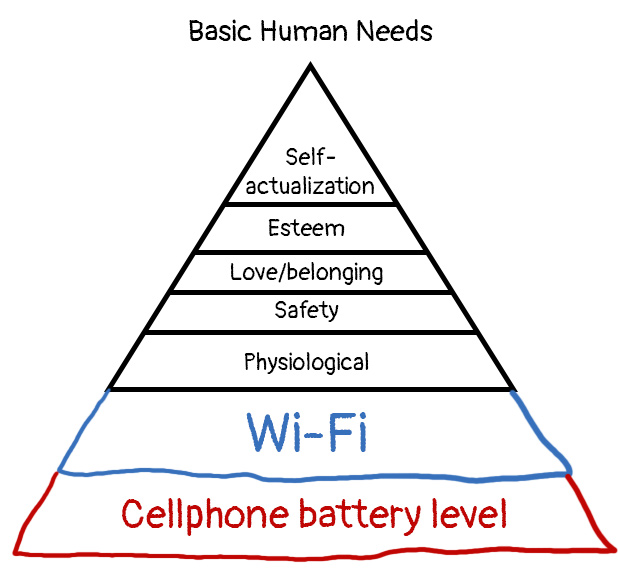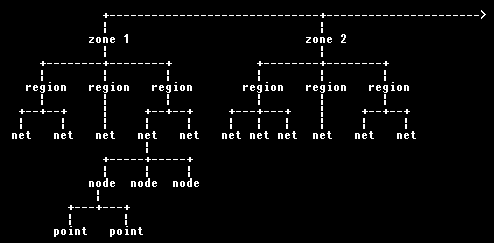February 7, 2017
Internet Archaeology.
The Internet – the one we all know and couldn’t do without for a second today – is still only a relatively new phenomenon. Just 20 years ago there was no Google, no Yahoo… Just 12 years ago you could only get yourself an account on Facebook if you were a student at an Ivy League university; the only tweets made back then were the original, analog versions; and iPhones were a mere figment of Steve Job’s imagination.
(The first iPhone appeared just 10 years ago; it had no front camera, no video, no GPS, no App Store! It’s like with many things today we take for granted – just a decade earlier they’d seem simply impossibly progressive and crazy!)
Then there’s the terminological confusion regarding the word ‘Internet’. The ‘Internet‘ is used to refer to all sorts of stuff while, strictly speaking, the Internet is a super-network joining up a huge quantity of local networks connected among themselves with TCP/IP protocols. This infrastructure uses the Worldwide Web, i.e., a network of millions of webservers all around the world, and this is where the likes of Google, Facebook and all the other zillion sites live. It’s namely this informational environment folks refer to when they tell you to find something on the Internet or ask if you’ve been banned from using the Internet at work. However, besides the web (www) infrastructure of the Internet, all sorts of other things are used, like various peer-to-peer networks, email, FTP servers, and other useful stuff like CCTV, televisions, ATMs, cars, and myriad other IoT devices.
But the theory and practice of modern computer networks aren’t what I want to talk about today. Instead, I’d like to talk about… archaeology! Sort of. I want to tell you about four proto-Internets of the past (in the widest meaning of the word ‘Internet’).
Project Cybersyn (Chile)
The above pic isn’t from some sci-fi movie but is an actual ‘cybernetic-synergistic’ operations room from Chile in the early 1970s. Project Cybersyn was a decision support system designed to help manage the socialist Chilean economy – mostly from this here Star Trek-esque control room.
Project Cybersyn was created during the presidency Salvador Allende. It consisted of a network of telex machines situated in state-run enterprises around the country that would transmit and receive data with a mainframe computer in Santiago. The system permitted conducting complex economic modelling and was able to make forecasts of possible outcomes of economic decisions. The ops-room was fitted with the futuristic techno-armchairs you can see in the pic. What you might not be able to see on the armchairs besides the controls are the ashtray and whisky-glass holder on each ).
After the military coup in 1973 ushered in the military junta under Pinochet, this futuristic national-scale ERP system was destroyed, together with the super-cool situation room (.
Minitel (France)
In the early 1980s in France an information network called Teletel began to function, which could be connected to with the help of special Minitel terminals. This network not only predated the development of the global Internet by several years, it also boasted Internet-like massive quantities of consumer services too. Minitel became the ‘France-wide-web’, because terminals were given out for FREE, resulting in high penetration levels among both businesses and the public: nine million devices and 25 million users in 1997!
Using Minitel (taking advantage of a downlinking speed of 1200 bits per second and an uplinking one of 75 bits per second) you could use phone directories, book air or train tickets, access bank accounts and other services, shop online, and participate in various forums. And, just like with the Internet, erotic services became very popular on Minitel (including ‘pink messaging’ adult chat services). Minitel also spawned a boom in startup companies for the platform.
The system’s downfall was its inability to change. No technical changes took place whatsoever. Ok, it was ahead of its time in the 1980s, but come the 21st century – with its smartphones and live streaming video – yep, you get the picture (actually – probably wouldn’t – if using Minitel:). So in the end, in the year 2012 – when Minitel was 30 years old! – it was finally shut down forever. Incidentally, in that year hundreds of thousands of folks were still using it (with access to 2000 different services) – no doubt folks who liked change as little as Minitel itself :-).
Curiously, the Frenchmen and women I told the story of Minitel to were all amazed that it lasted that long, thinking it had died out in the last millennium.
FidoNet (Global)
Fido! Before the Internet it was via this network that a window could be opened onto the big digital world in which there are no borders and where chatting with other users on the other side of the planet as if they were next door was possible.
Fido was born in the U.S. in early 1980s and in mid 90s in some countries it took on a cult status and following.
Technically Fidonet is a network connecting many different bulletin board systems (BBS). Files in Fido could be distributed normally only in convoluted ways, but we, for example, used it to distribute official updates from the start through the mid-1990s! I think that at the time we had the fastest updates in the world!
Unlike its other pre-Internet peers, Fido is still going, albeit on a much lesser scale than in its heyday.
ARPANET (USA)
The direct ancestor of today’s Internet, ARPANET was a computer network created by the Advanced Research Projects Agency of the US Department of Defense (back then called ARPA; now: DARPA). ARPANET was the second computer network in the world to be based on packet switching (the first was developed in the UK, which was later connected to ARPANET). The network was also the first to implement the TCP/IP protocol suite, which went on to become the technical basis of the Internet.
The first historical connection on ARPANET was made in 1969 between UCLA and the Stanford Research Institute. The first word attempted to be transmitted was ‘login’; however, it only got as far as ‘lo’; the system crashed before ‘gin’ could be added. Thus, the first message to be sent was ‘lo’ (hardly lo-fi, mind!). An hour later the full world ‘login’ was successfully transmitted. Since those humble beginnings the network grew quickly; several years later most of the large research centers in the US were connected:
A few years later in 1973, both Norway and the UK were connected to ARPANET. In 1975 ARPANET was declared ‘operational’.
Here’s an advert for the PDP-11, the system that connected to ARPANET at the University of Illinois:
From the outset the network was designed so that its separate parts could function even if the connection with other parts was lost. Whether this was so it could withstand a nuclear attack or just so it could maintain continuous operation despite dodgy connection stability back then is to this day still argued over.
In 1971 the first email was sent via ARPANET. In 1973 the first file was transferred using the just-developed File Transfer Protocol. Later in 1973 the legendary Morris worm crashed ARPANET by kinda making it DDoS itself.
Incidentally, there was another US – civilian – computer network run separately to ARPANET – NSFNET (1985-1995) – which connected research centers around the country. It eventually developed into a major part of the Internet backbone.
In 1990 ARPANET was decommissioned. Right up to the end, btw, ARPANET was a purely (US) military network.
What Else?
Besides the above-listed four there were of course many other Internet-like networks, be they military, civilian, research or commercial. But it was these four that, to me, were the key ones. Still, if you know of any others I haven’t mentioned here that could be worth a mention, please do tell me about them in the comments. For the most interesting, astonishing and/or unusual – from me: a prize!







